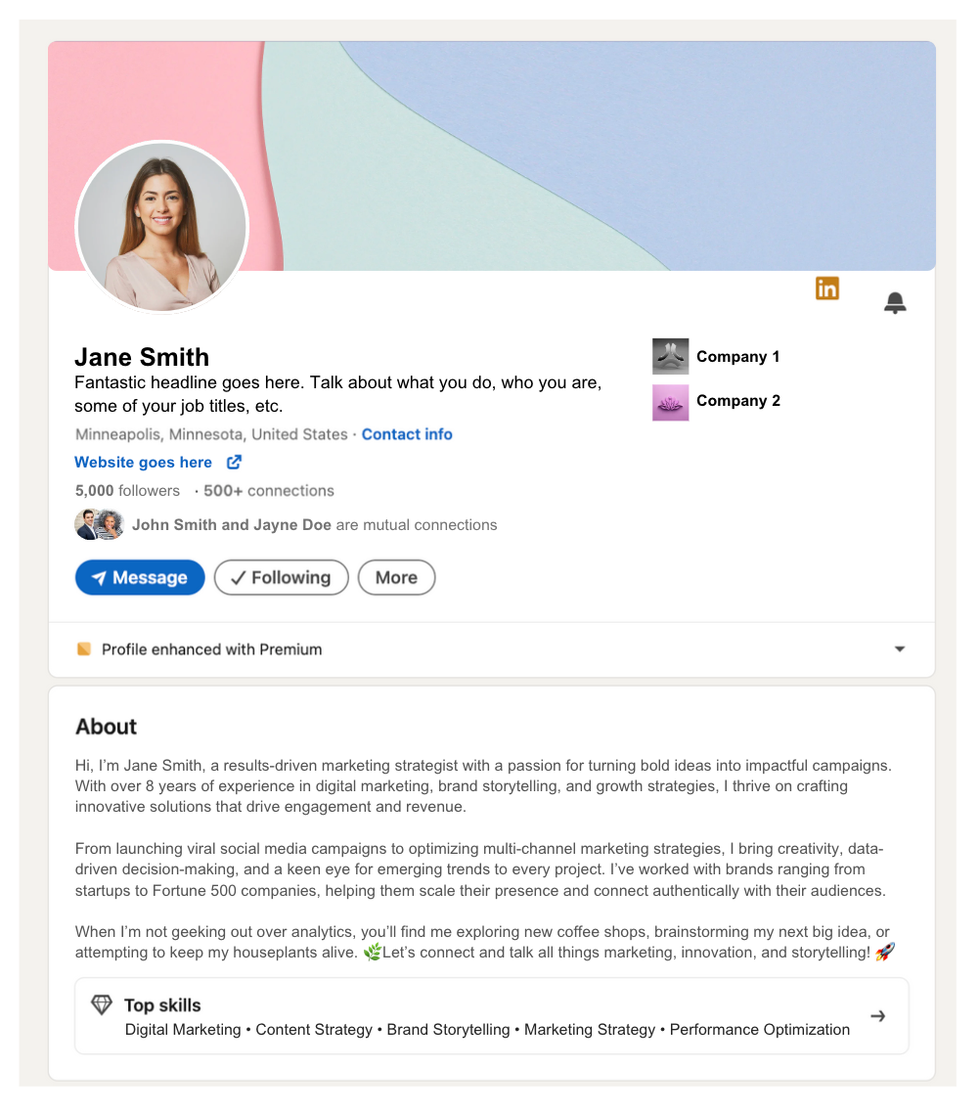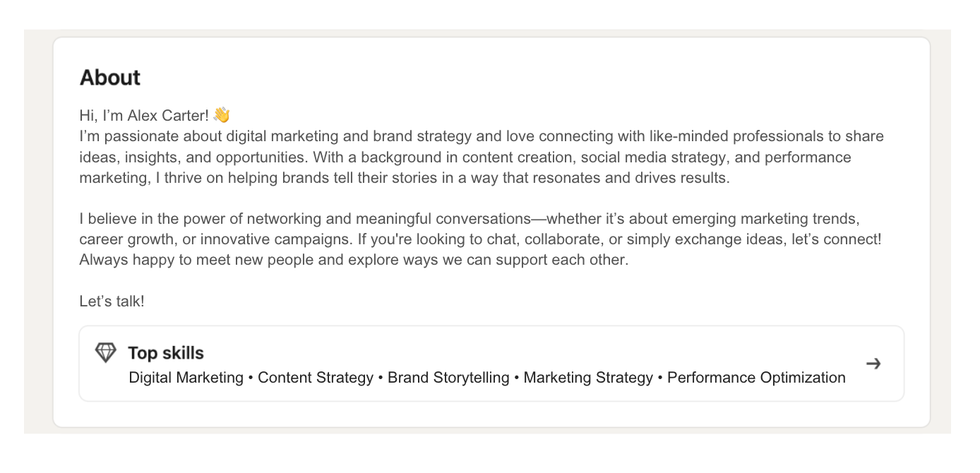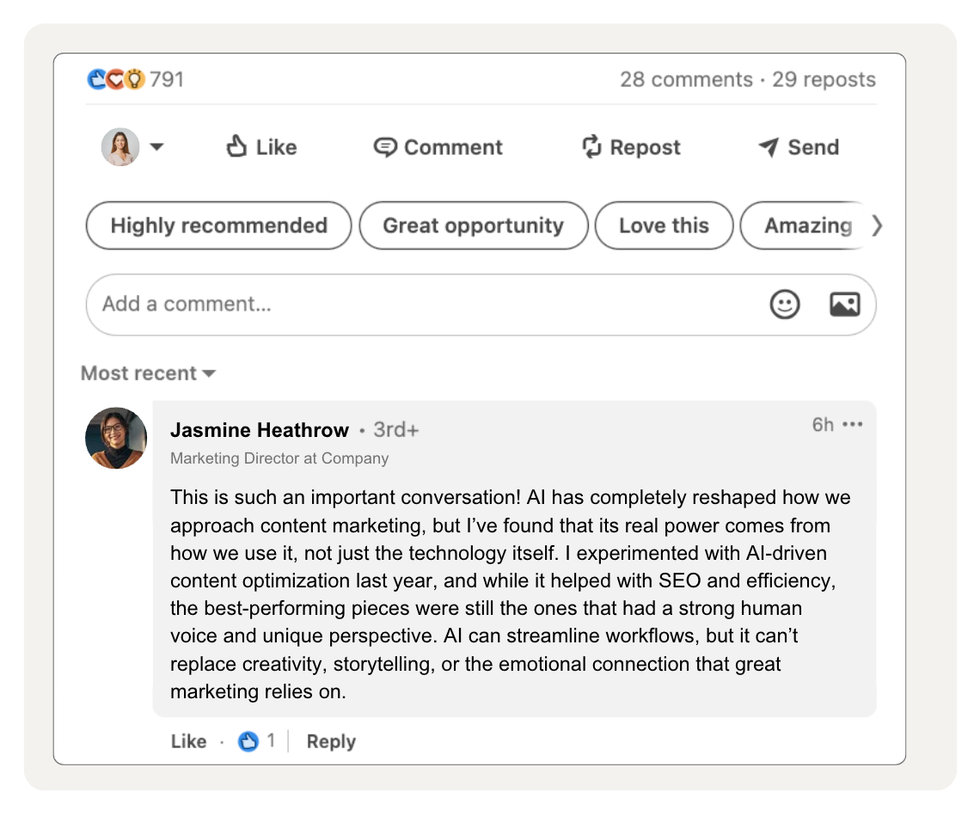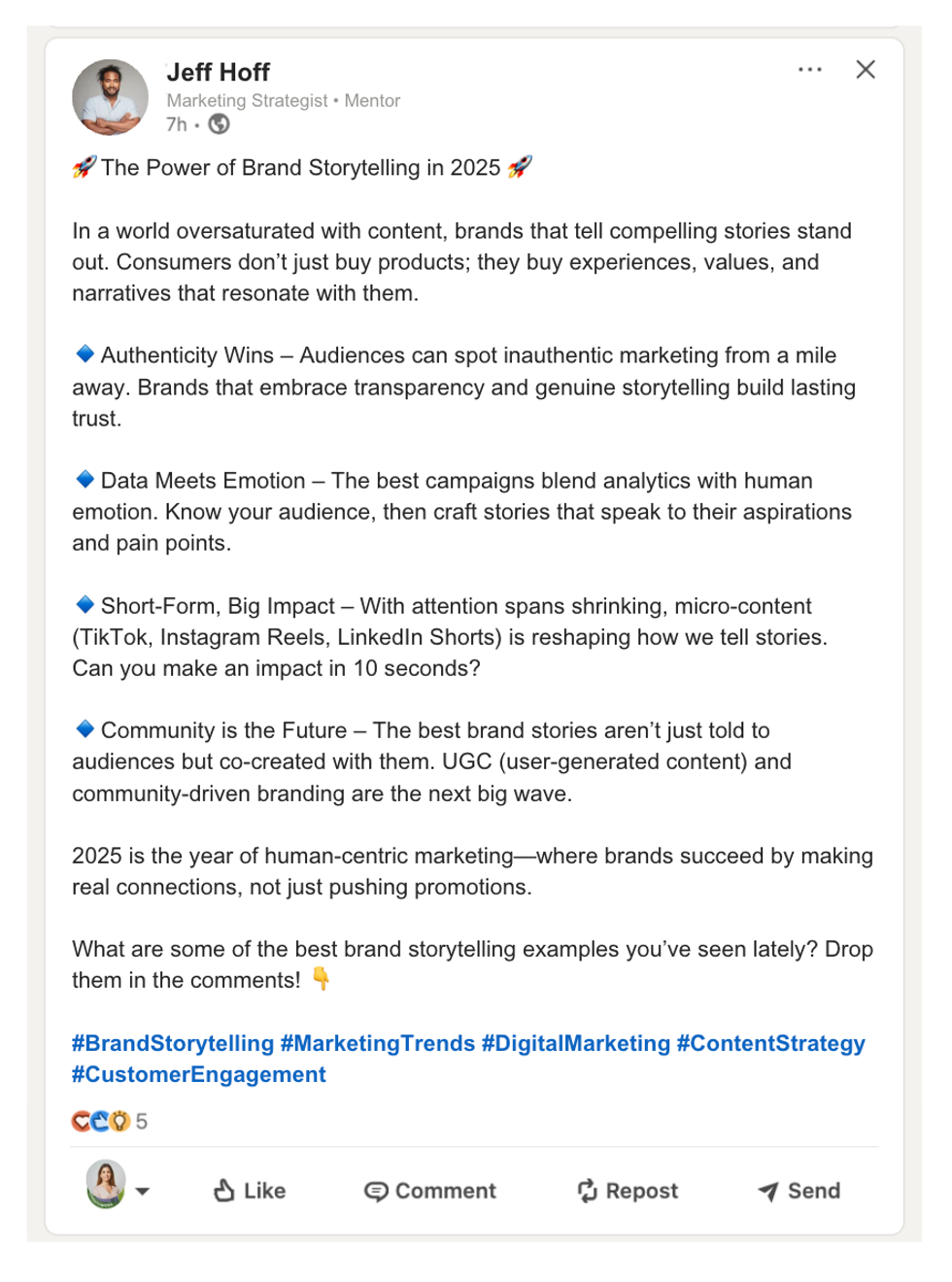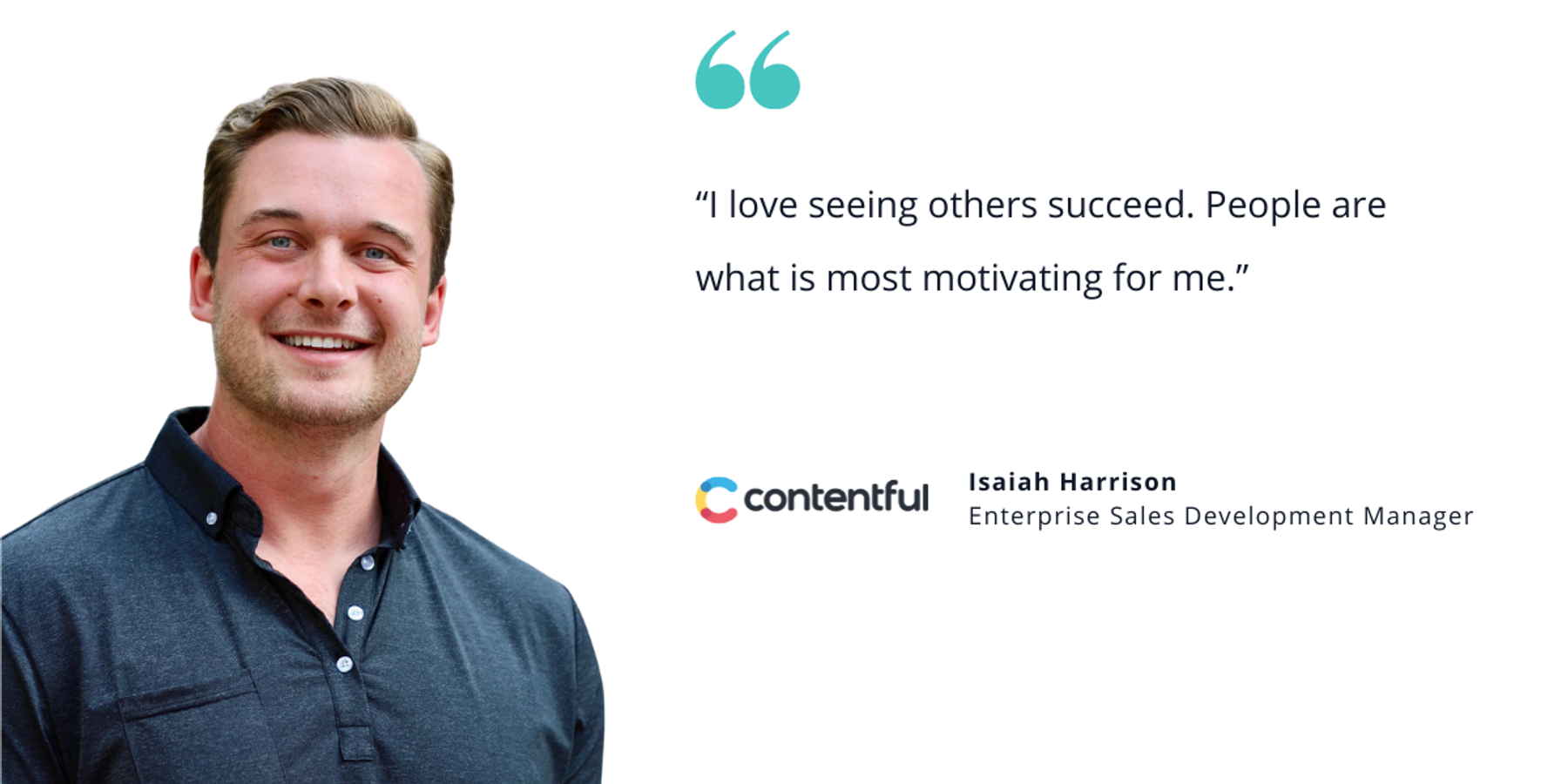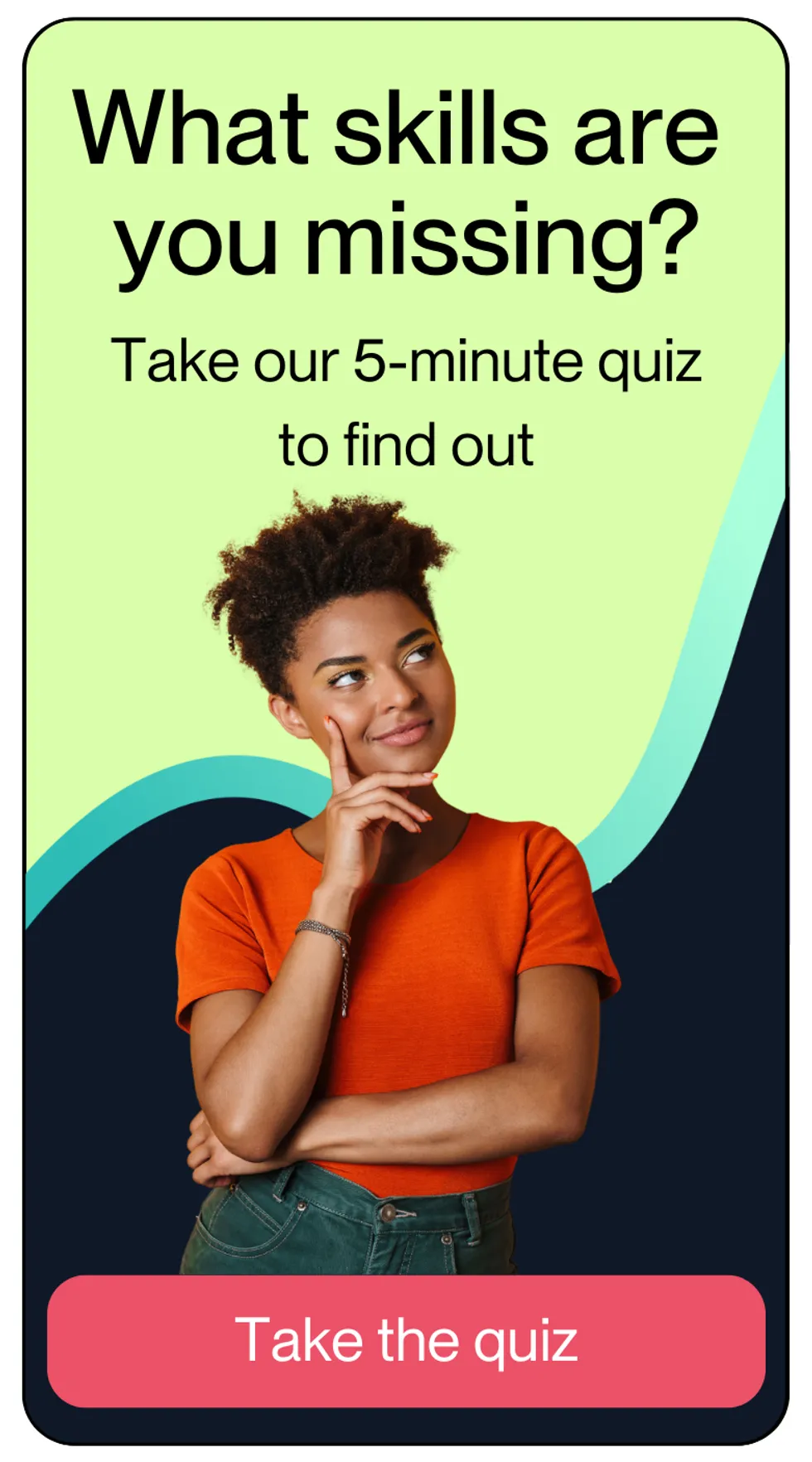Not to date myself, but I created my LinkedIn account back in 2013, on the last day of my first internship, and, admittedly, I didn’t utilize it to its full potential for a long time.
As you probably know by now, LinkedIn has a job dashboard, a directory of companies and professionals, triples up as a networking tool for employers and employees alike, and is also a content creation platform now. Everything in one! Anyone who’s looking to hire, get hired, teach, learn, and grow is on LinkedIn. But is everybody on LinkedIn using it well? Are you happy with your LinkedIn experience? If the answer is no, the gap might lay in how you network on LinkedIn. Yup, there is a ‘correct’ way to network!
In this blog, I’ll tell you everything I have learned about LinkedIn (especially networking on LinkedIn) from experience, from how to effectively use LinkedIn for networking to creating your own presence on the platform. This is the one post you need to kickstart your LinkedIn networking journey.
Let’s get started!
🎥 Grab some quick networking tips from our chat Craft Your Unforgettable LinkedIn Presence: Insights from Founding LinkedIn Editor Lorraine K. Lee.
Optimize your LinkedIn headline to get noticed - YouTubewww.youtube.com
Step 1: Setting yourself up for success
Sadly, signing up isn’t the same as setting up your account. You need a LinkedIn profile that can do the talking for you. If we want to use LinkedIn to network, we have to create a profile that people want to connect with.
Here’s how:
Complete your profile:
Sounds obvious, but we can’t begin without getting the basics out of the way. When you’re on LinkedIn, you want to start by creating a profile that’s professional and engaging. Don’t worry too much about preparing; the platform tells you the completion stages of your profile. Complete all of the LinkedIn profile setup steps until your profile says “all-star profile,” because, as per LinkedIn, members with complete profiles are 40x more likely to receive opportunities via the platform.
Finetune your profile:
Once all the details are fed, you want to make sure the presentation is slick. First things first, get your headline and ‘About’ section in order. Keep it simple and fun! Also, the shorter, the better. The profile picture you select also plays an important role here. Make sure it’s clear and professional, but you can inject a little of your personality there, too.
Establish your professional status and objective of being on the platform:
LinkedIn has its own badges: open to work, hiring, etc. You can add them to your profile picture as needed and then elaborate on your goals in your bio section. So, if you are looking to connect with people from the same industry or if you’re looking to mentor other folks in your industry, mention that!
Tip: Make it clear you’re open to connecting — add a line in your bio. Don’t be afraid to make it obvious, either!
Read this next: 10 LinkedIn profile tips for job seekers
Section 2: Who to network with
How do you effectively use LinkedIn for networking? Start by asking: who do you want to network with?
This is the part of the strategy where you sit down to define your intent — the reason you're on the platform should also guide this decision. For instance, if you’re there to learn, you’d connect with your seniors, industry leaders, experts, thought leaders, and mentors. If you’re there for a job hunt, you would connect with alumni from your university or people working at companies you like. It’s also a good idea to connect with your current colleagues and easily expand your network.
Boost your job search by adding recruiters on LinkedIn - YouTubewww.youtube.com
Another great option is LinkedIn groups, which can provide great opportunities to network with industry professionals, alumni, or even geographic networking like your local city. Think of them like pre-curated peer spaces where you can engage with content and find other people already ready to network.
But, unless a person already knows you, there’s always a chance they may not accept your connection request right off the bat.
Here are some ways to increase your acceptance ratio:
1️⃣ Don’t just send random requests. Research the person you want to connect with. If they post on LinkedIn actively, that helps. Understand their content, engage with them in the comment section, and build a connection with them prior to sending a request.
2️⃣ Don’t send empty requests. LinkedIn allows you to send a personalized note along with your request. Use it to introduce yourself, but keep it light and fun. It’s a personalized note, after all, not a sales pitch.
Read this next: How to network like a pro
Section 3: Be memorable, but be real
We’ve covered setting up a profile, completing it, and connecting with people. But…that’s not quite the same as networking. A network is, at its core, a community, where people can ping you when an opportunity comes up, or they know whom to ask for help when needed. Without this connection, it is just a list of names.
So, how do we get to this place of developing a community that remembers us? We commit to a routine of dialogue.
Start commenting on LinkedIn - YouTubewww.youtube.com
LinkedIn is a platform to voice your (usually professional) opinion. Pick your niche and post content that makes sense to you, or maybe some thought leadership and industry engagement. However, it’s important to be authentic in this process, because your audience (and network) can tell.
On the other hand, standing out isn’t too hard. All you have to do is step inside the pool of copy+pasted, templated AI-generated voices you find everywhere and just be the real human, well, you!
In my experience, I found that when I talked about things that mattered to me, the energy was contagious. Those posts attracted like-minded people, some of whom would eventually go on to become clients and colleagues. But, most importantly, those posts (re)defined me as someone who’s keen on sharing real insights and experiences.
Tip: We recommend dedicating an amount of time every day or week to engaging with other people’s content — try 20 minutes a day and see if you get an uptick in networking!
Section 4: Keep the conversation going
Networking on LinkedIn is about connections, and connections are all about conversations. When you start a conversation, you are essentially opening the door to possibilities. Just make sure the door stays open and doesn’t shut right off within a few days.
Keeping in touch is key. Don’t just post; also engage with the posts you love reading. Anytime you come across content you like, that’s the opportunity. A simple, thoughtful comment on why that post resonates for you works! You could even post a disagreement as long as it’s done respectfully.
If you’ve recently sent a connection request, don’t disengage after it’s accepted. Make sure to check in with your new connections shortly after (we suggest about a week). And I get it — you don’t want to sound too clingy or overly chatty, but you also want to chat about possible opportunities.
Here are some professional check-in email templates that can help:
📝 Free download: Professional Check-In Email Templates
Struggling to stay connected with your network? These customizable check-in email templates will help you:
- Reconnect with contacts naturally, without the awkwardness of "cold" outreach
- Create authentic touchpoints that strengthen your network over time
- Save time crafting the perfect message for different relationship scenarios
It’s also normal if you don’t have an agenda behind the conversation! Personally, I think those are the best conversations. Just wanting to connect is a good reason, and you can remain open to where it can lead you. Maybe a few years down the line, you would find yourself working together.
Watch this next: Leveraging Your Network to Land Your Next Job
It has been two years since I have been actively using LinkedIn, and from personal experience, I can tell you that it has transformed my professional (and even personal) life for the better. I’ve gained leads outside my existing network, projects beyond my comfort zone, a community of readers and writers I connect with, a trusted panel of mentors (as well as mentees), and it continues to give more.
If you’re feeling stuck — the most important bit in networking on LinkedIn is just to start. As they say, the first step is always the hardest, but we’re rooting for you as you move further ahead in your professional journey.

